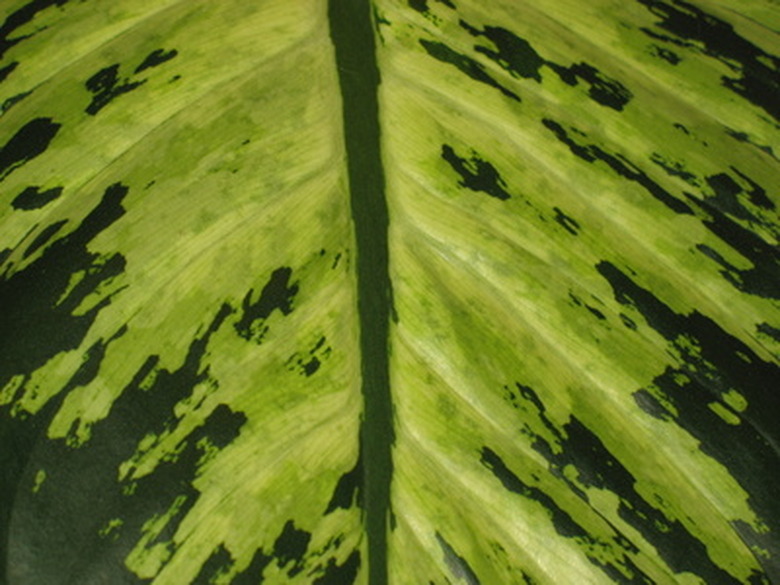How Do You Take Care Of A Dieffenbachia Plant?
Things Needed
- Liquid foliage houseplant fertilizer
- Pruning shears
- Planter pot
- All-purpose potting mix
Dieffenbachia, also called the dumbcane, is a low-maintenance tropical houseplant. Dieffenbachia plants tolerate low-light conditions and grow quickly in most household environments. These plants grow 3 to 6 feet tall and 1 to 3 feet wide. Dieffenbachias leaves reach up to 1 ½ feet long and 1 foot wide in shades of green and with spots, dots, stripes or brightly-colored leaf veins. These plants are not for all households, however, especially if you have pets or young children. The plant's stems and leaves contain toxic substances that can cause skin rashes or illness if touched or eaten. To care for a dieffenbachia, keep the plant away from drafts and water regularly.
- Dieffenbachia, also called the dumbcane, is a low-maintenance tropical houseplant.
- Dieffenbachias leaves reach up to 1 ½ feet long and 1 foot wide in shades of green and with spots, dots, stripes or brightly-colored leaf veins.
Step 1
Position your dieffenbachia plant in bright, filtered light from spring until fall. In winter, move the plant into brighter, more direct sunlight.
Step 2
Maintain normal indoor air temperatures of 60 to 75 degrees F. Keep your dieffenbachia plant away from drafty areas and heating or air conditioning vents to prevent large fluctuations in air temperatures.
Step 3
Water your dieffenbachia when the top 1 inch of potting soil begins to feel dry to the touch. Pour water into the potting soil around the plant until the water begins to drain from the bottom of the pot.
Step 4
Feed your dieffenbachia plant once every two to four weeks from March through September with an all-purpose liquid fertilizer made for foliage indoor plants. Apply the fertilizer at half the normal dosage rate and according to the instructions on the label.
- Position your dieffenbachia plant in bright, filtered light from spring until fall.
- Feed your dieffenbachia plant once every two to four weeks from March through September with an all-purpose liquid fertilizer made for foliage indoor plants.
Step 5
Cut the dieffenbachia's main stems back to about 6 inches above the soil level if the lower leaves begin to drop off and the plant stems become too long and bare. The dieffenbachia plant will grow back readily and become rejuvenated.
Tip
Re-pot your dieffenbachia plant only when it becomes top-heavy or too large and crowded in its container. Re-pot the plant in early spring, transferring the dieffenbachia to a pot that's the next size up and filled with an all-purpose potting mix that drains well.
Warning
Watch out for the dieffenbachia plant's leaf edges taking on a scorched or burned appearance. This indicates that you're over-fertilizing the plant. If the leaves turn yellow, are dwarfed or become stunted, you're under-fertilizing.
